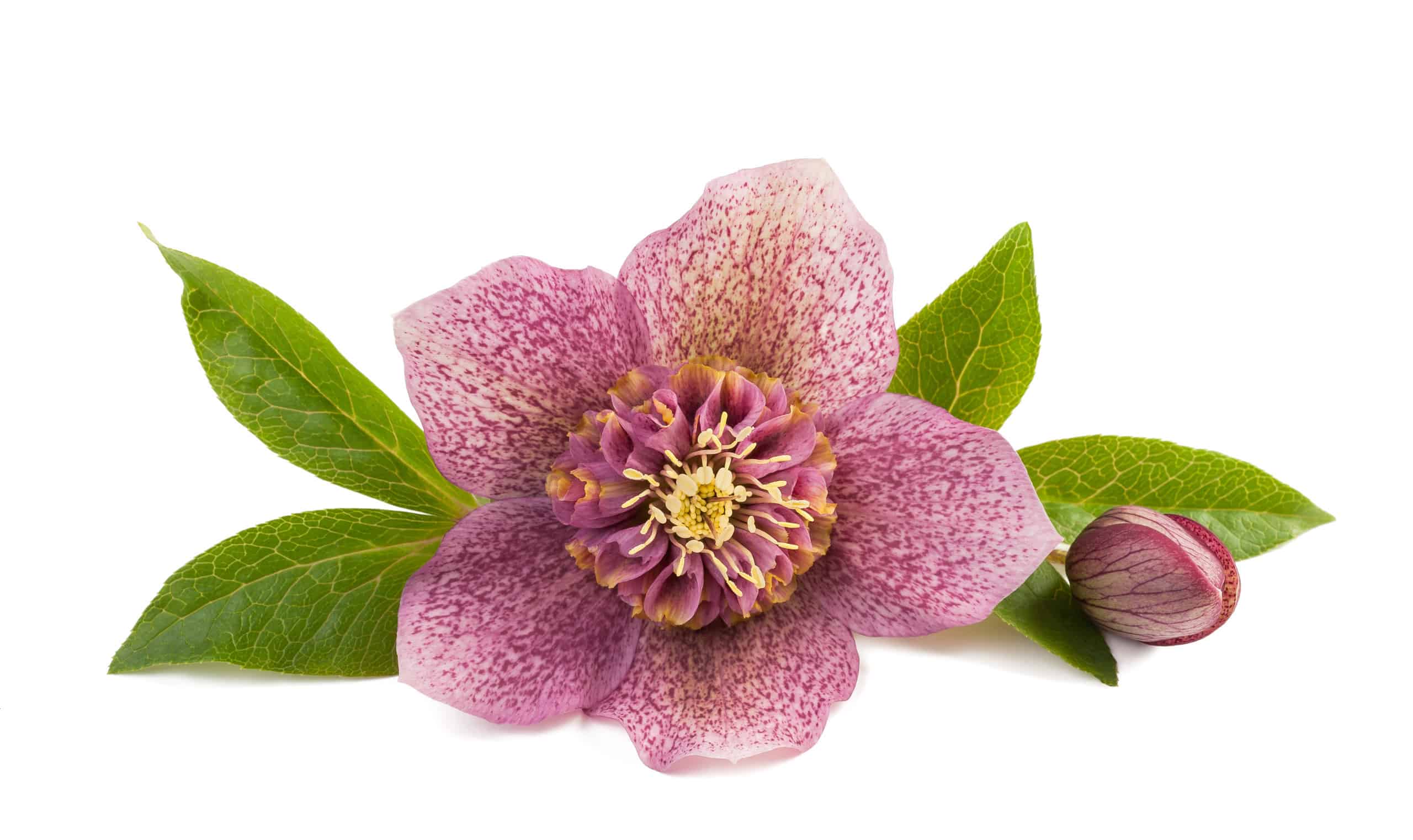Now is the ideal time to plant spring-blooming perennials in the warm fall soil. This gives them a chance to develop strong roots, and they will be ready to grow and bloom when spring arrives. If you live in a hot climate, wait until temperatures cool down, but don’t wait too long, or the plants won’t have a chance to get settled before a freeze occurs.
1. Cushion Spurge
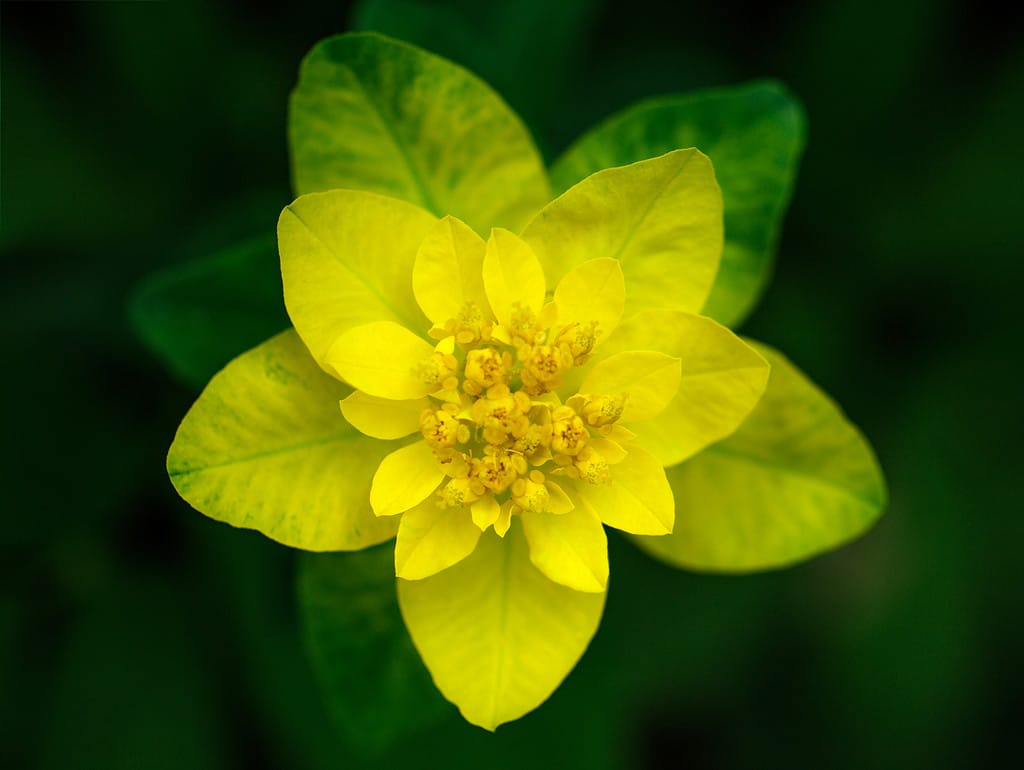
Bright yellow milkweed, or cushion spurge, is a favorite of many pollinators.
©Marina Bagrova/iStock via Getty Images
Cushion spurge (Euphorbia epithymoides) is a perennial flowering plant with small, bright yellow-green flowers perched atop a mound of deep green, fleshy foliage. The foliage is lance-shaped and succulent, with a slightly rugged texture. Its stems are branched at the base and can reach up to 12 inches in height. The flowers are borne in clusters, often in contrasting colors of yellow and green, and have a unique three-lobed structure. As an evergreen, cushion spurge holds its foliage throughout the year, making it a good choice for landscaping.
2. Yarrow
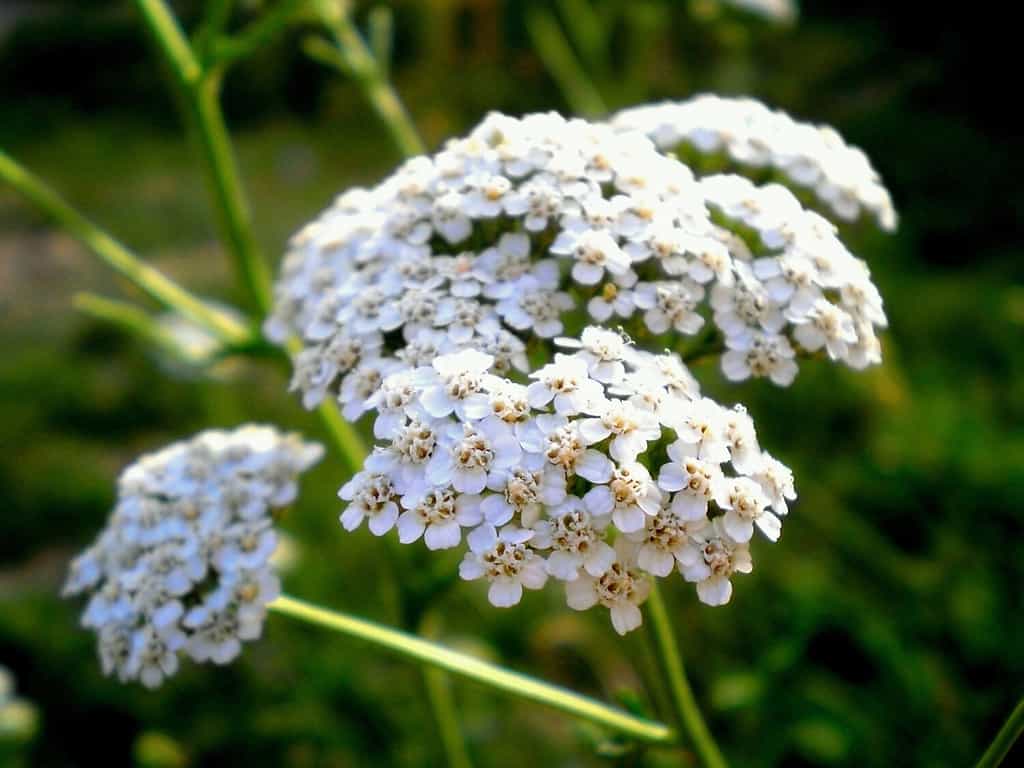
As spring-blooming perennials go, yarrow is one of the best for butterflies.
©SakSa/Shutterstock.com
Yarrow (Achillea millefolium) is a perennial herbaceous plant with feathery, fern-like foliage and clusters of small, white, yellow, pink, or red flowers. Its stems are woody at the base and can reach up to three feet in height. Many narrow, deeply cut leaflets divide their leaves. The flowers are small, typically occurring in clusters of between two and six, and are borne on a single, erect stem. Yarrow has a strong, pungent aroma and a bitter taste. Its blooms last for many weeks, and butterflies love them.
3. Lantana
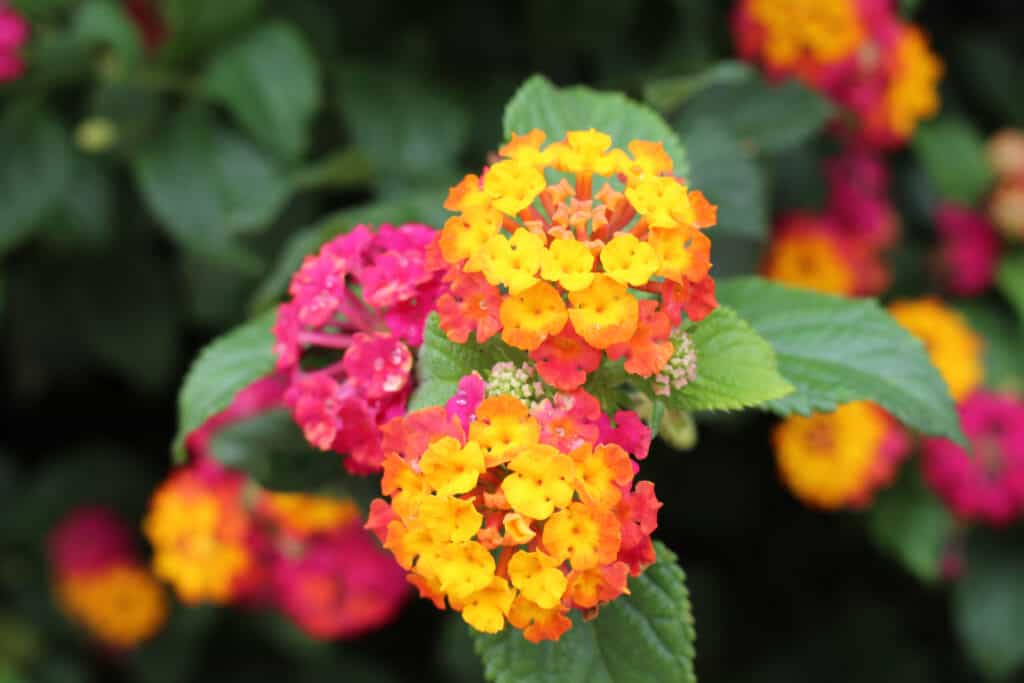
There are many types of lantana that have multi-colored blooms.
©Johanna Weber/Shutterstock.com
Lantana (Lantana camera) is a shrub-like plant with woody stems and an upright, spreading habit. Its leaves are typically dark green with a paler underside and range from 2-4 inches long. It produces clusters of small, brightly colored flowers in shades of yellow, orange, pink, white, and purple. It has a long flowering season, from spring through autumn. The fruit of lantana is a small, round berry that ripens to a dark purple color. People use it as an ornamental plant in gardens, and it grows wild in tropical and subtropical climates. It is a hardy plant that is tolerant of various soil types and can withstand light frosts.
4. Bleeding Heart
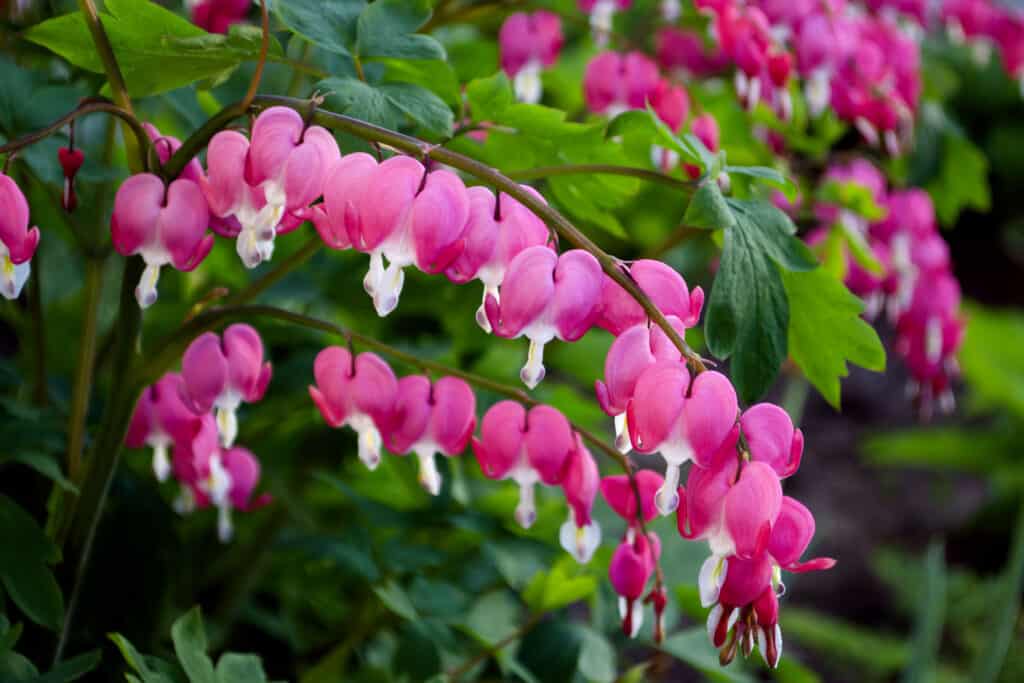
A bleeding heart plant will bloom in the spring, and they love shady and moist gardens.
©iStock.com/Oksana Akhtanina
Bleeding Heart (Dicentra spectabilis) is a unique and beautiful perennial flowering plant. It has delicate, arching stems and bright green foliage. Its showy, heart-shaped flowers hang in pendulous clusters and are pinkish-red with white tips. The flowers have a distinct, recognizable shape and are fragrant. The foliage is finely divided and has an interesting texture. Bleeding Heart is a stunning spring-blooming perennial.
5. Mexican Bush Sage

If you have a hot, sunny garden, consider planting Mexican bush sage. It smells so good!
©Beach Creatives/Shutterstock.com
Mexican bush sage (Salvia leucantha) is a perennial plant with long, soft, velvety leaves of a grey-green color. Its upright stems are covered with fine, white hairs and can reach up to about 2 feet in height. At the top of each stem, a cluster of small purple-pink flowers blooms. The flowers have protruding white stamens and are quite fragrant. The foliage is highly aromatic when brushed against or crushed, giving off a pleasant, sweet scent. Mexican bush sage is a gorgeous spring-blooming perennial that pollinators adore.
6. White Gaura
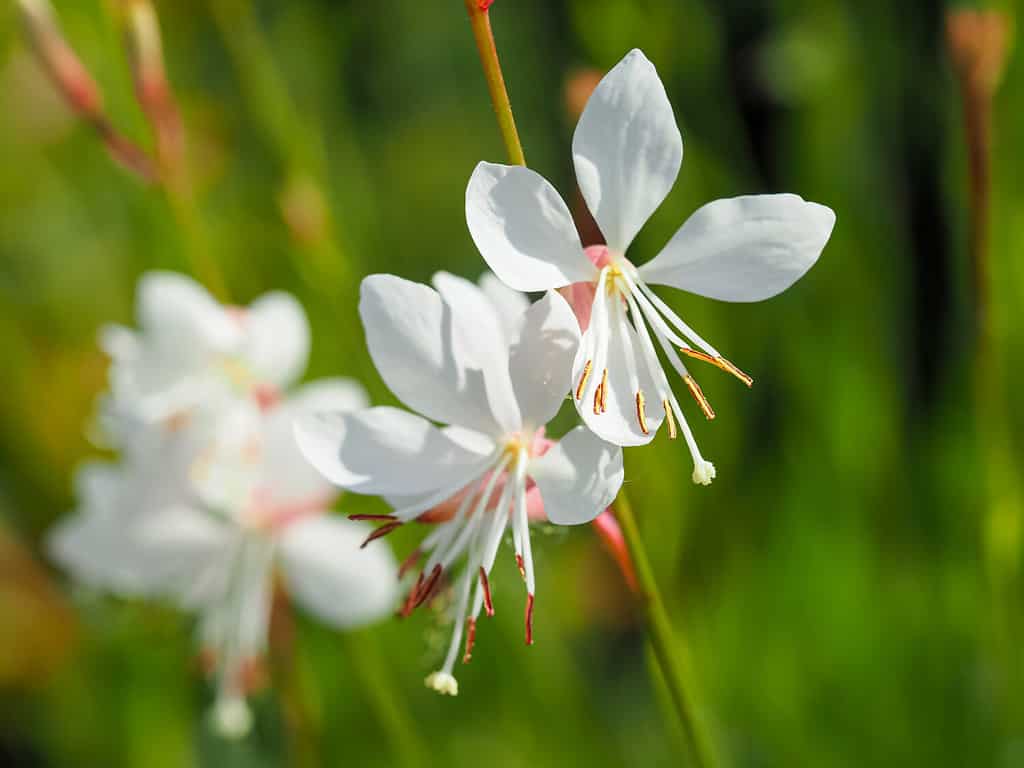
If you are looking for a delicate spring-blooming perennial, white gaura may be for you.
©AngieC333/Shutterstock.com
White Gaura (Oenothera lindheimeri) is a perennial flowering plant with a tall, upright habit. Narrow, lance-shaped, deep green foliage tops clusters of small, white, star-shaped flowers. The flowers have four narrow petals and long, thin stems with a nodding habit. White Gaura is a drought-tolerant plant that can reach heights of 3-4 feet with a spread of 1-2 feet. People often call this plant “whirling butterflies: because of the shape of the flowers.
7. Coreopsis
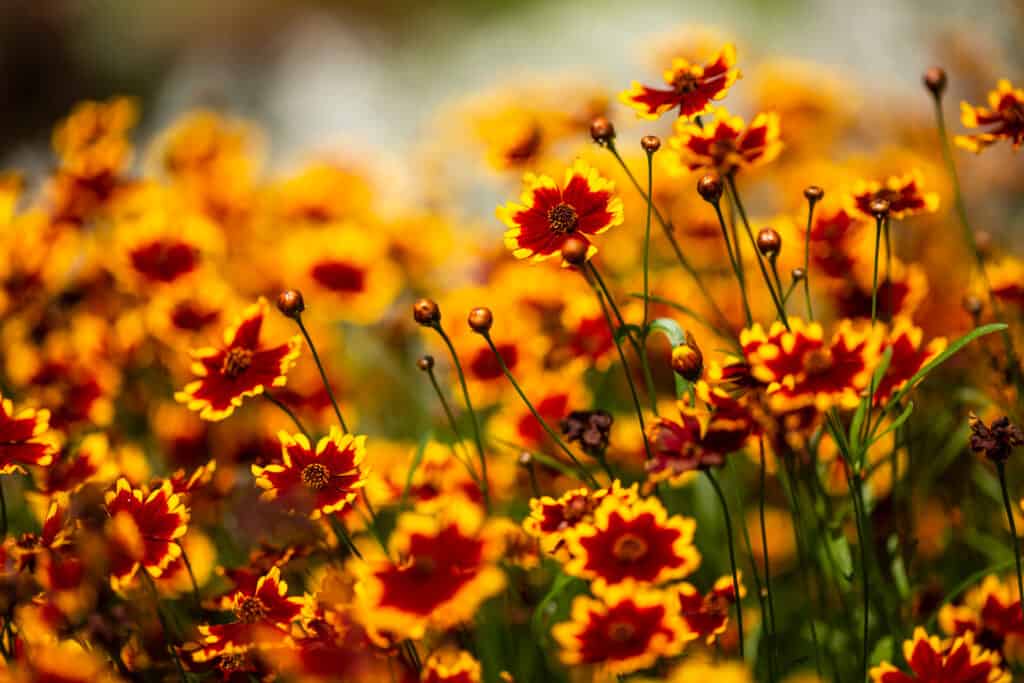
People also call coreopsis tickseed.
©RuthG/Shutterstock.com
Coreopsis (Coreopsis spp.) is a beautiful flowering plant with bright yellow petals and a light brown center. Its petals are shaped like stars, and its leaves show a vibrant green. The stem is slender and long with a few branching stems. Its flowers bloom in summer and last until autumn. The blooms are a cheerful addition to any garden, and they attract bees and butterflies. Coreopsis is a hardy plant, able to withstand both heat and cold. It grows best in full sun and is drought-tolerant.
8. Purple Coneflower
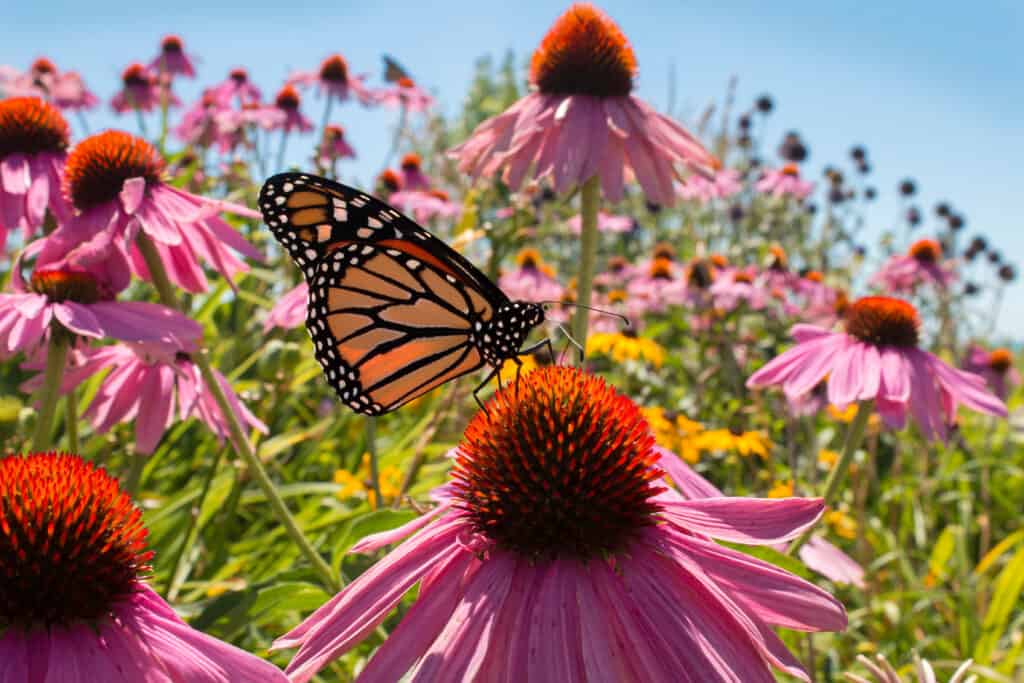
Spring-blooming perennials like coneflowers are great for feeding pollinators after a long winter.
©Media Marketing/Shutterstock.com
Purple coneflower (Echinacea purpurea) is a perennial flower with a bright, daisy-like appearance. It has large, flat, purple petals with a bright pink-orange center cone. Lance-shaped leaves grow in a rosette pattern. Its stems are sturdy and covered in fine hair. The plant can reach up to 2 feet tall and 3 feet wide. It blooms in the late spring and continues to flower until late fall. Its flowers attract many pollinators, such as bees, butterflies, and hummingbirds.
9. Pincushion Plant

Pollinators love early spring-blooming perennials after a hard winter.
©RobertSchneider/iStock via Getty Images
The pincushion plant (Scabiosa columbaria) is a small, shrubby perennial with bright green, deeply divided leaves. Its flowers are small and star-shaped in shades of lavender, blue, and white. When mature, the flowers form a round, cushion-like structure. The seed heads have a spiky, thistle-like appearance. The pincushion plant is a low-growing plant, usually reaching about 10 inches in height. It is a lovely lavender spring-blooming perennial that you should consider planting this fall.
10. Spiderwort
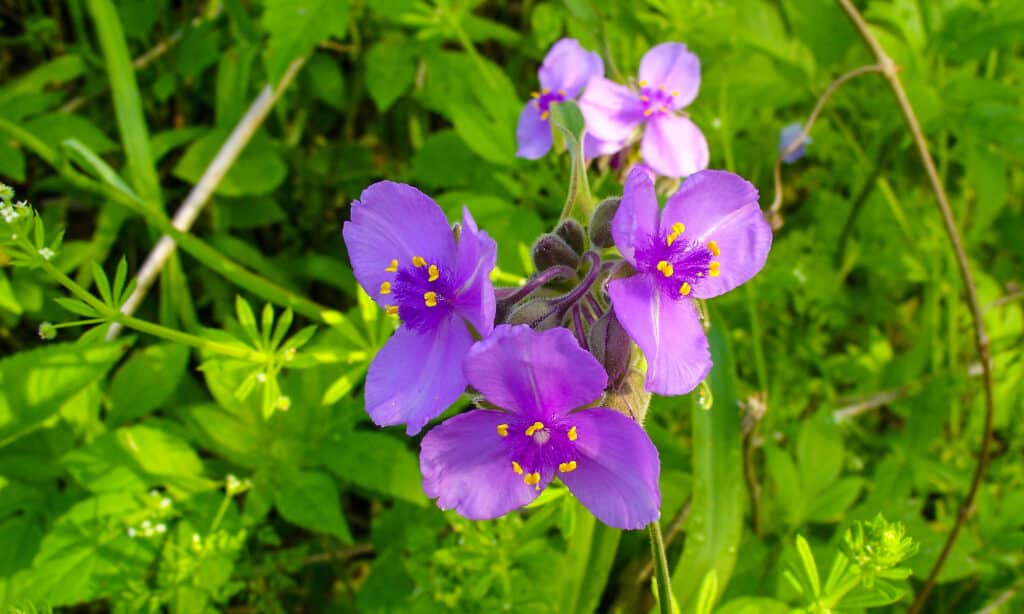
The lovely purple flowers of spiderwort will brighten up any spring.
©Mary E. McCabe/Shutterstock.com
Spiderwort (Tradescantia) is an ornamental flowering plant with a striking physical appearance. Its stems are succulent and typically range from 1-3 feet in length. It has long, pointed, triangular leaves that are usually green or purple in color. Its blooms are small and star-shaped and come in various shades of pink, purple, and white. Each bloom is typically 1 inch in diameter and has three petals and three sepals. The plant also produces brown, 3-angled capsules, which contain tiny black seeds.
11. Dianthus

Be sure to plant your spring-blooming perennials in the early fall so they have time to grow roots.
©iStock.com/ANGHI
Dianthus (Dianthus spp.) is a beautiful flower with a variety of colors, shapes, and sizes. Its petals are usually bright and vibrant and can range from white to pink to purple. The frilly, ruffly petals have black or dark purple centers. The leaves are long and thin, and the stems are rough and hairy. The flowers have a sweet, pleasant aroma, and the whole plant has a delicate, delicate look. It is an impressive spring-blooming perennial with flowers clustered together in large bunches.
12. Spotted Dead Nettle
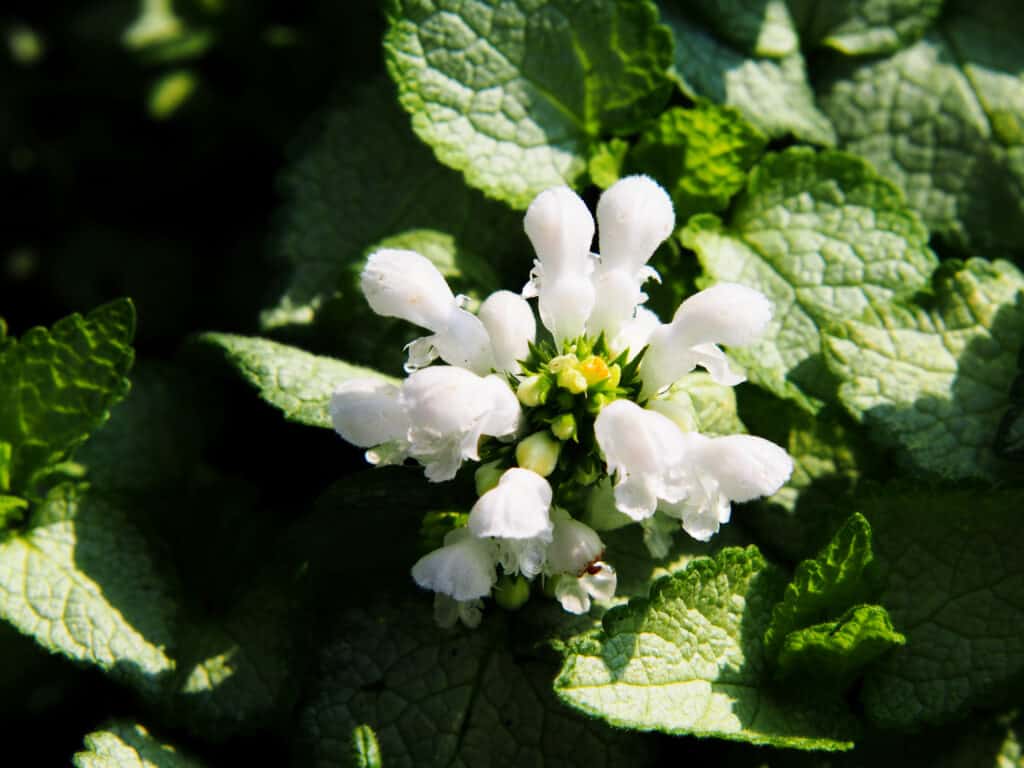
White nancy, or spotted dead nettle, is a big favorite of bees.
©Anna Gratys/Shutterstock.com
Spotted dead nettle (Lamium maculatum) is a perennial herbaceous plant with opposite, triangular leaves. Its leaves have silvery white spots and a slightly toothed margin. The upper surface of the leaves is dark green, while the underside is covered with fine, silvery hairs. Its flowers are small, tubular, pink, white, or purple in color and arranged in loose, terminal clusters. The stems are square, slightly hairy, and often have a purplish hue. The plant typically reaches heights of 6-12 inches and grows happily in shady woodland areas.
13. Sundrops

Hartweg’s Evening Primrose is different than the biennial sundrops.
©Megan Hansenhttps://www.flickr.com/photos/nestmaker/, CC BY-SA 2.0 – Original / License
Sundrops (Calylophus hartwegii) is an attractive spring-blooming perennial with bright yellow-orange petals. They are low-growing plants, reaching heights of up to 12 inches. Their leaves are thin and gray-green, and their stems are wiry and upright. The flowers of sundrops are daisy-like and have five petals, each petal measuring approximately one inch long and 0.5 inches wide. They have a yellow-orange center that contains a central disc of small, yellow stamens. Sundrops bloom from late spring through late fall.
14. Astilbe

If you need a spring-blooming perennial for a semi-shady, moist garden, astilbe is your friend.
©Tanya_Terekhina/Shutterstock.com
Astilbe (Astilbe spp.) is a beautiful plant with lush foliage and delicate flowers. It is a spring-blooming perennial that typically grows from 1-3 feet tall. Astilbe has lance-shaped, toothed leaves that are typically green or bronze-purple in color. The flowers are feathery plumes of white, pink, or purple. The blooms appear in late spring and last until autumn. Astilbe is a great choice for adding texture and color to gardens, particularly in shady, wet areas.
15. False Indigo
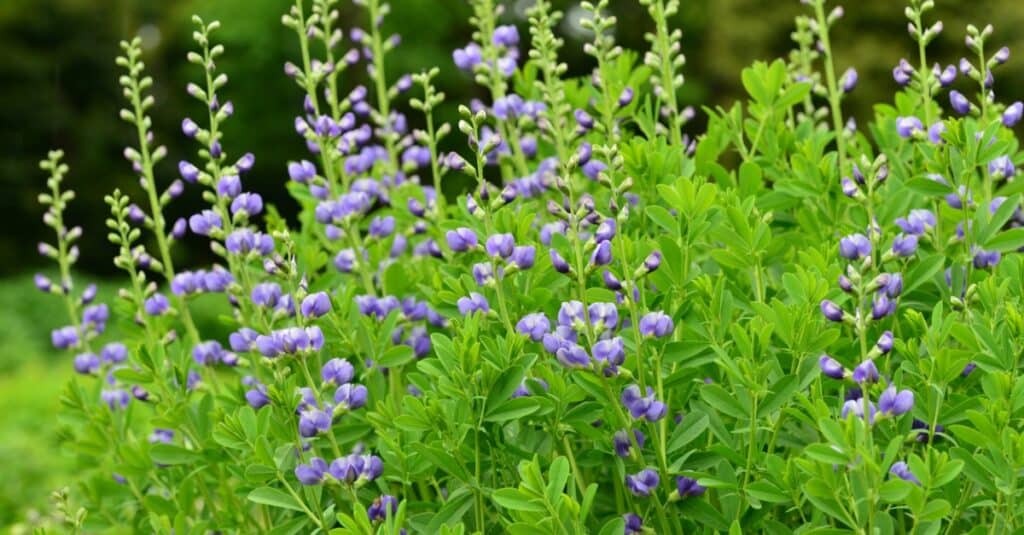
People also call this spring-blooming perennial false indigo or
horsefly
weed (Baptisia).
©iStock.com/magicflute002
False Indigo (Baptisia) is a beautiful spring-blooming perennial flower. It has large, lush, deep green foliage that turns a purplish-bronze in the fall. The vibrant, deep blue flowers appear in clusters on long, strong stems. False indigo has a woody, strong texture topped with a tuft of bright green foliage. The plant can reach heights of three to four feet and has a broad, upright habit. Its strong taproot makes it ideal for use in drought-tolerant gardens. The attractive foliage and bright flowers are hardy in Zones 3-9.
16. Columbine

The array of colors available when choosing columbine seeds is dizzying.
©NOOR RADYA BINTI MD RADZI/Shutterstock.com
Columbine (Aquilegia) is a beautiful flower with delicate petals in a range of colors. The bell-shaped blooms have five petals that are usually spurred in the back. The top petal is often hooded, and the lower three petals are usually longer and wider. The stem is slim, and the leaves are generally divided into three distinct leaflets. The foliage is usually a light to mid-green color. The flowers come in colors of white, pink, blue, yellow, red, and purple. Columbine blooms in late spring are a favorite of hummingbirds and butterflies.
17. Virginia Bluebell
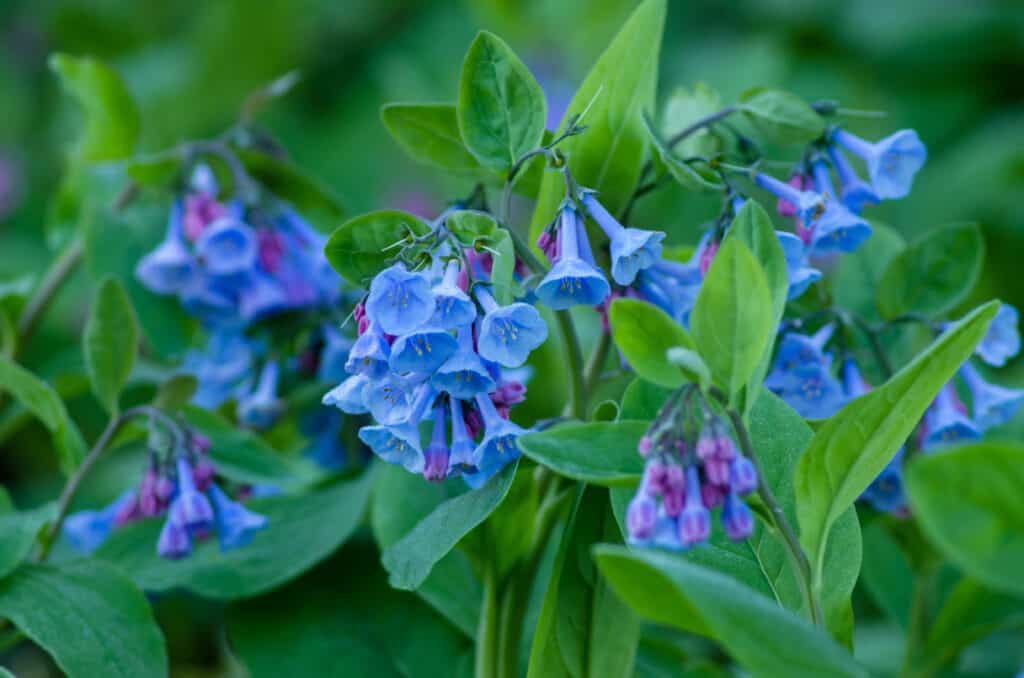
The lovely blue shade of Virginia bluebells makes them a highly sought-after spring-blooming perennial.
©iStock.com/Joshua Moore
The Virginia bluebell (Mertensia virginica) is a delicate, spring-blooming perennial flower. Its bell-shaped, pinkish-purple blooms hang in clusters. Their large, oval-shaped leaves are deep green and covered in small hairs. Its sturdy, upright stems are smooth and bright green in color. It produces small, four-petaled flowers in the spring, blooming from April to June. The Virginia bluebell has a delicate yet striking appearance.
18. Creeping Phlox

If you have a rock garden or hillside, creeping phlox makes a lovely spring-blooming perennial display.
©iStock.com/MaYcaL
Creeping phlox (Phlox subulata) is a low-growing ground cover plant with a profusion of star-shaped flowers in shades of pink, purple, white, or blue. It has needle-like leaves and a trailing habit that makes it an ideal choice for rock gardens and slopes. Its bright blooms last for several weeks in early spring, and its foliage remains evergreen in mild climates. Creeping phlox is a versatile and easy-care plant that is hardy from Zones 3-9.
19. Pasque Flower
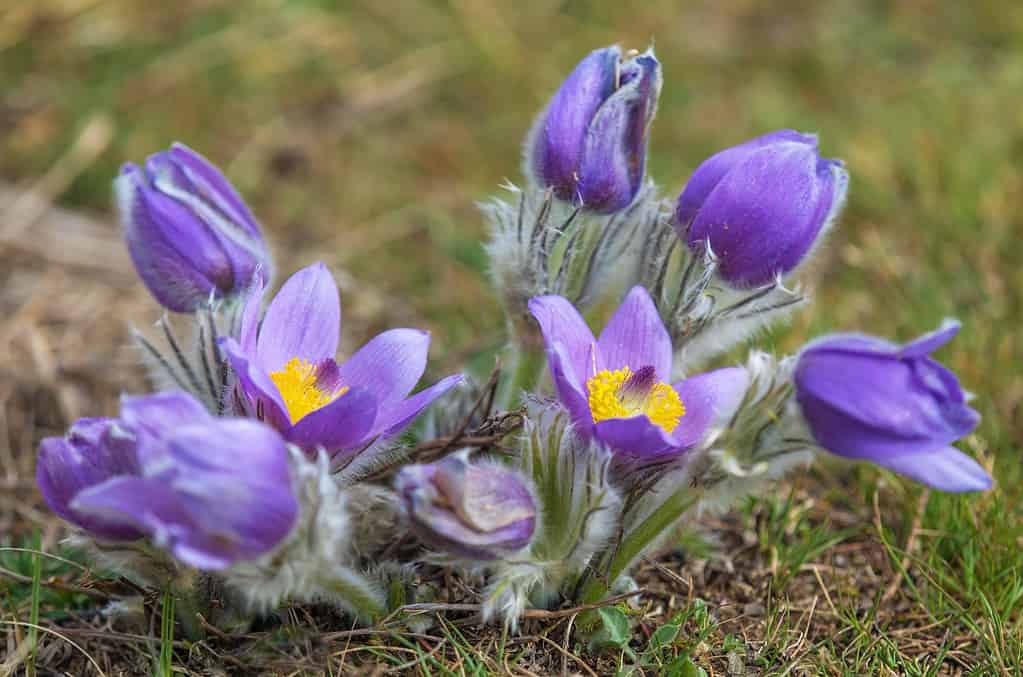
This purple spring-blooming perennial flower has many other names, including windflower and meadow anemone.
©Daniel Prudek/Shutterstock.com
The pasque flower (Pulsatilla vulgaris) is a beautiful sight to behold. It has a bell-shaped purple-violet flower with a small yellow center. The deeply divided leaves have five to seven lobes with soft, silvery-white hairs. It has thick, hairy stems and fringed and pointy petals. stems are thick and hairy. The pasque flower has long, slender sepals and an egg-shaped fruit that contains black seeds. It blooms in the late spring and early summer. Its beauty and unique features make it stand out in a field of wildflowers.
20. Hellebore
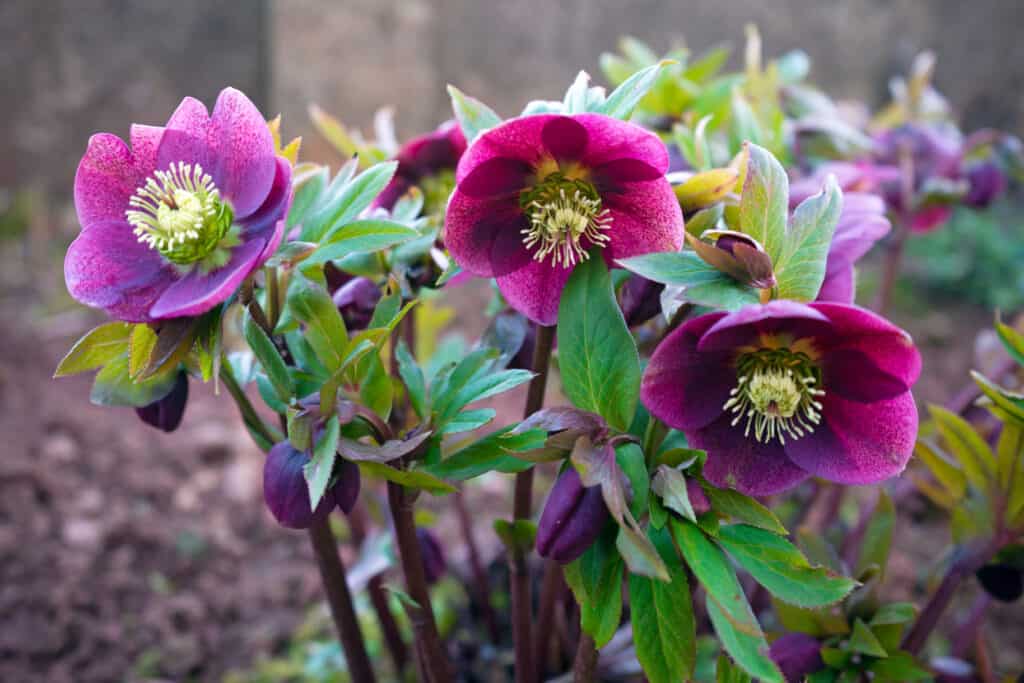
If you live in Zones 4-9, you can plant spring-blooming perennial hellebores.
©iStock.com/Maksims Grigorjevs
Hellebores (Helleborus) are striking plants with large, leathery leaves. They produce beautiful, bell-shaped flowers in shades of pink, purple, white, and yellow. Some varieties feature speckled petals or two-tone blooms. The foliage is evergreen, and many species are everblooming. The blooms are often fragrant, and the leaves have a glossy sheen. Hellebores are low-maintenance and deer-resistant, making them an ideal choice for a spring-blooming perennial.
21. Peony
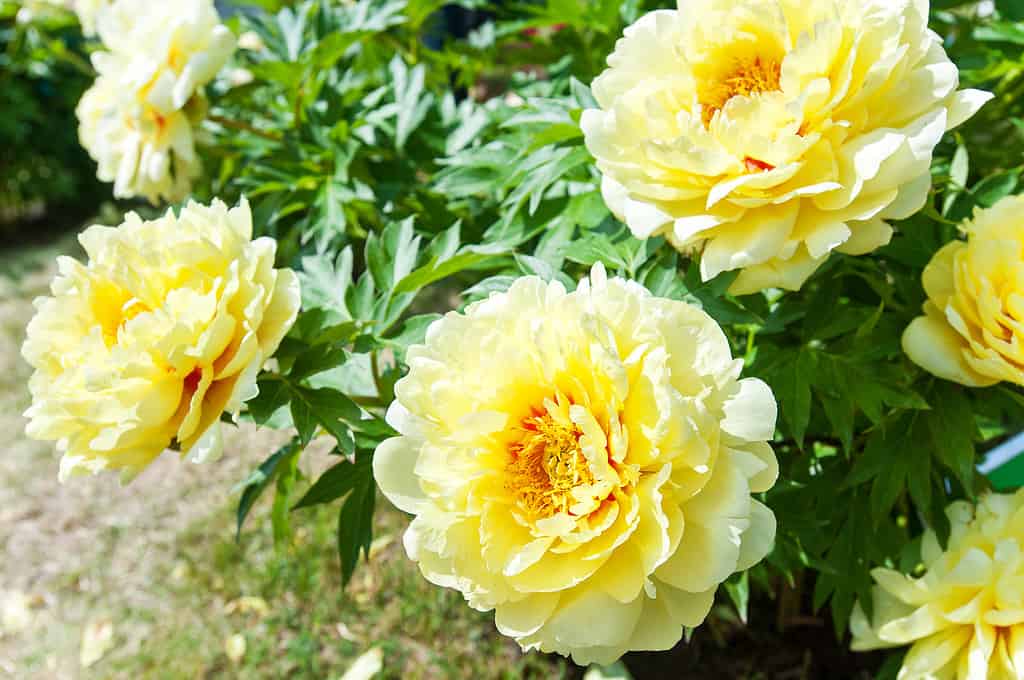
One of the most vase-worthy spring-blooming perennials is the lovely peony.
©AnnaElizabeth photography/Shutterstock.com
Peonies (Paeonia lactiflora) are large flowers with ruffled petals in shades of pink, white, and red. They have a distinct, sweet scent and grow to be quite large. The center of the flower is often a deep yellow color. The petals are soft and velvety, and the stems are thick and sturdy. The leaves are large and glossy, and the blooms may have more than one layer. Peonies are truly a stunning sight with their full and lush blooms. Their nectar is one of the primary food sources for ants in the early spring.
22. Iris

Everyone loves the gorgeous spring-blooming perennial blooms of the stately iris.
©Mark Byer/Shutterstock.com
Irises (Iris spp.) are beautiful flowers with a variety of colors and shapes. They have long, thin stems with lush green leaves. The blooms are composed of three petals that can be flat or ruffled. The petals can be in a wide range of colors, such as blue, purple, pink, yellow, orange, white, and even bi-colored. The middle of the flower has a yellow or brown center. The petals can be plain or have stripes or spots.
23. Daffodil
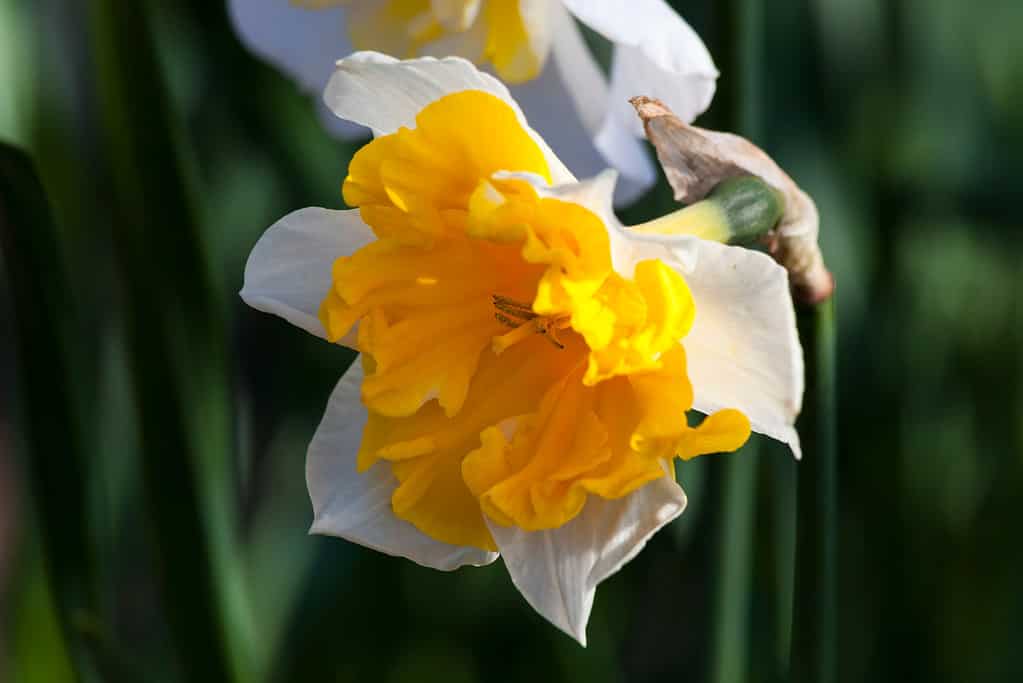
Did you know there are daffodils with double blooms?
©Tony Baggett/Shutterstock.com
Daffodils (Narcissus) are bright, cheerful flowers with a distinct shape. They have long, slender stems with vibrant yellow petals that fan out in a star-like formation. The center of the flower has a trumpet-shaped center that is usually a deep yellow or orange. The leaves of a daffodil are long and narrow with a waxy texture. Some varieties have multiple blooms on one stem.
24. Tulip
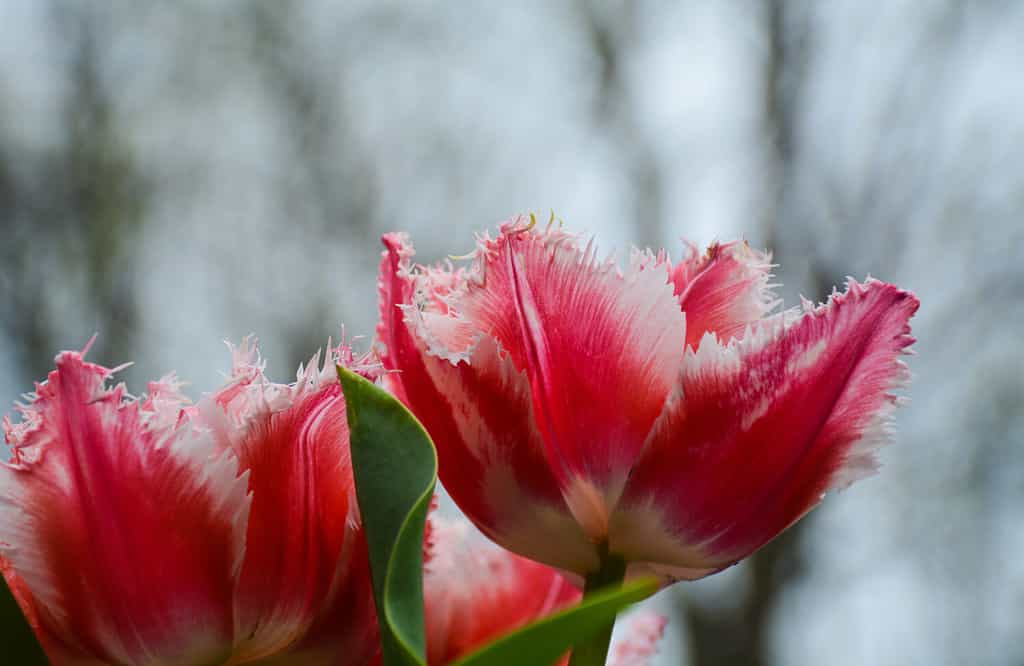
If you put tulips in a vase, they can last for 10-14 days.
©Miles Stock Photography/Shutterstock.com
Tulips (Tulipa) are stunning, vibrant flowers with a unique shape. They feature long, slender stems that hold up cup-shaped blooms in a range of colors, including red, yellow, pink, orange, and even purple. The petals are usually slightly wavy and pointed at the tips. The center is often filled with a cluster of yellow stamens. Tulips are a favorite of gardeners because of their beautiful blooms and ease of care. They also make a great cut flower to decorate a home or special event.
Summary of 24 Spring-Blooming Perennials You Should Be Planting Right Now
| Number | 24 Spring-Blooming Perennials |
|---|---|
| 1 | Cushion Spurge |
| 2 | Yarrow |
| 3 | Lantana |
| 4 | Bleeding Heart |
| 5 | Mexican Bush Sage |
| 6 | White Guara |
| 7 | Coreopsis |
| 8 | Purple Coneflower |
| 9 | Pincushion Plant |
| 10 | Spiderwort |
| 11 | Dianthus |
| 12 | Spotted Dead Nettle |
| 13 | Sundrops |
| 14 | Astilbe |
| 15 | False Indigo |
| 16 | Columbine |
| 17 | Virginia Bluebell |
| 18 | Creeping Phlox |
| 19 | Pasque Flower |
| 20 | Hellebore |
| 21 | Peony |
| 22 | Iris |
| 23 | Daffodil |
| 24 | Tulip |
Thank you for reading! Have some feedback for us? Contact the AZ Animals editorial team.

